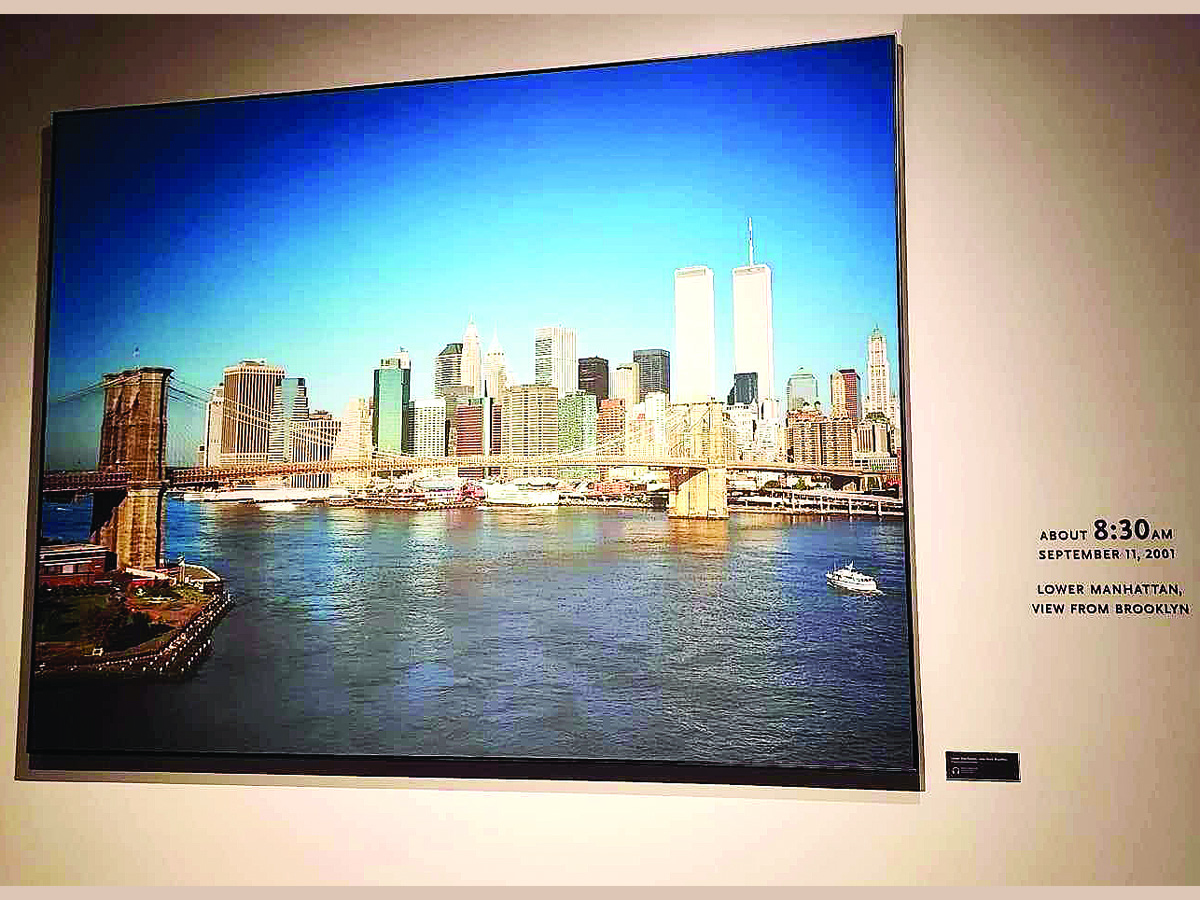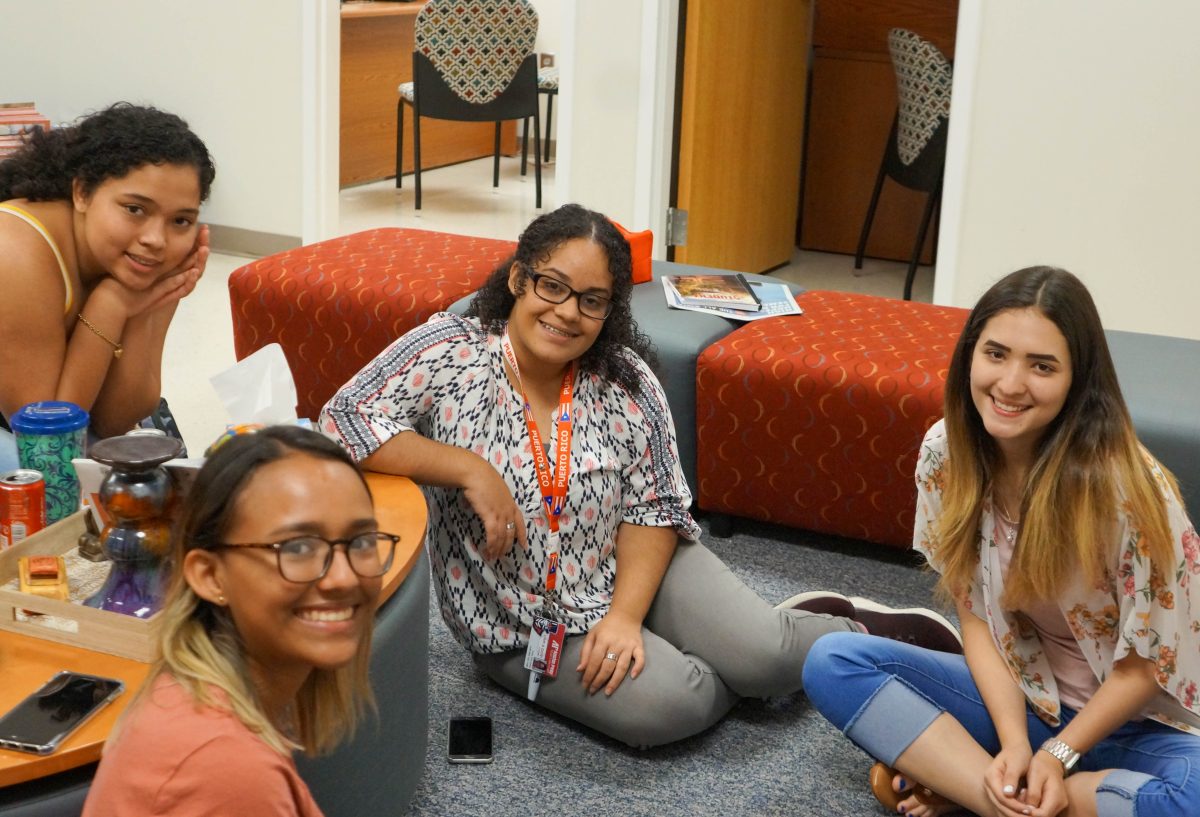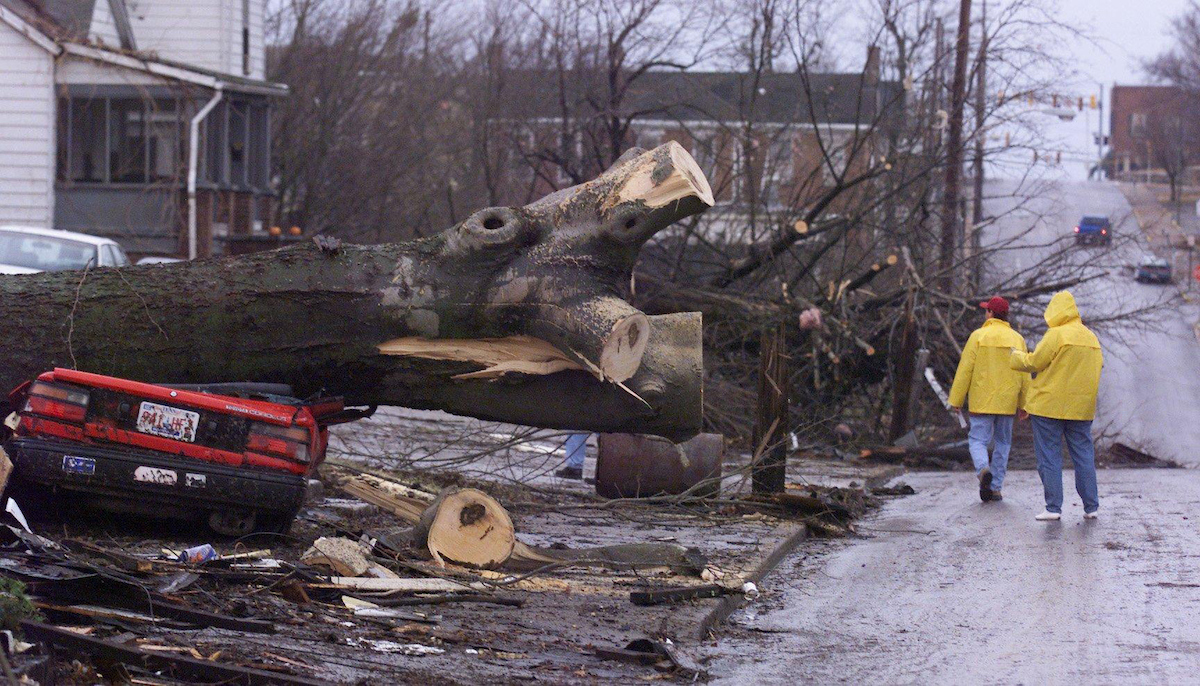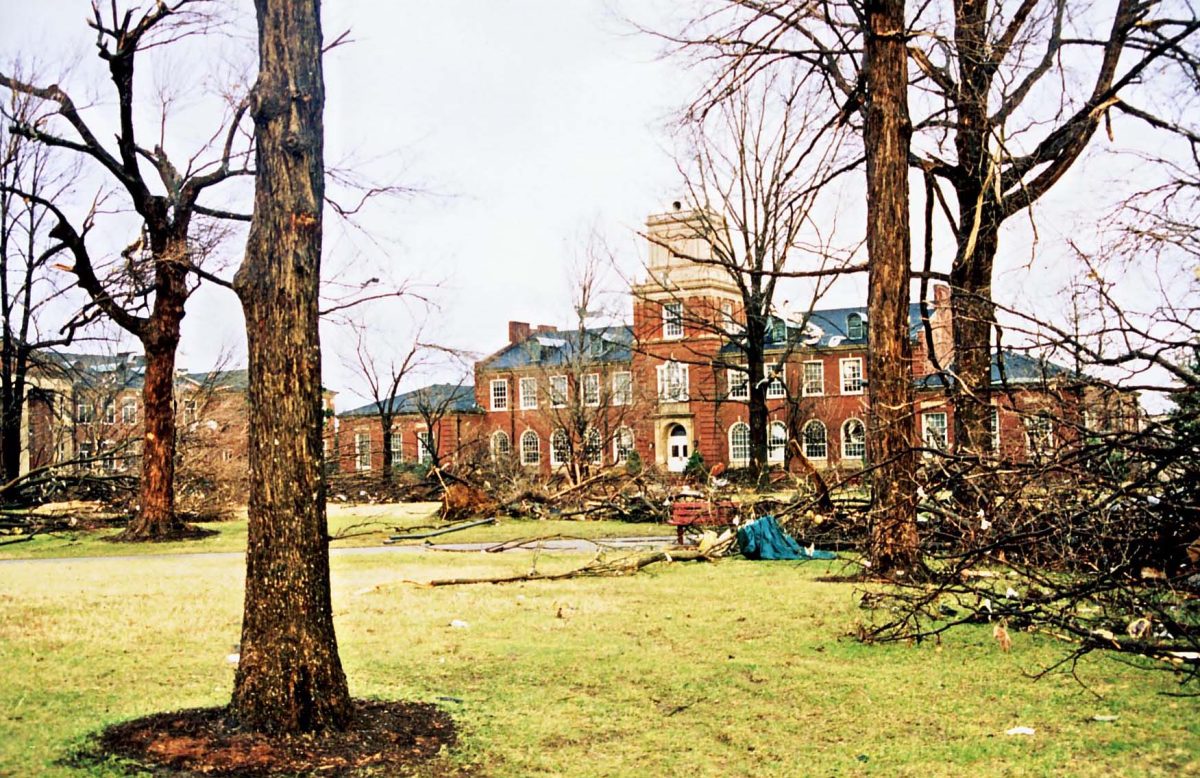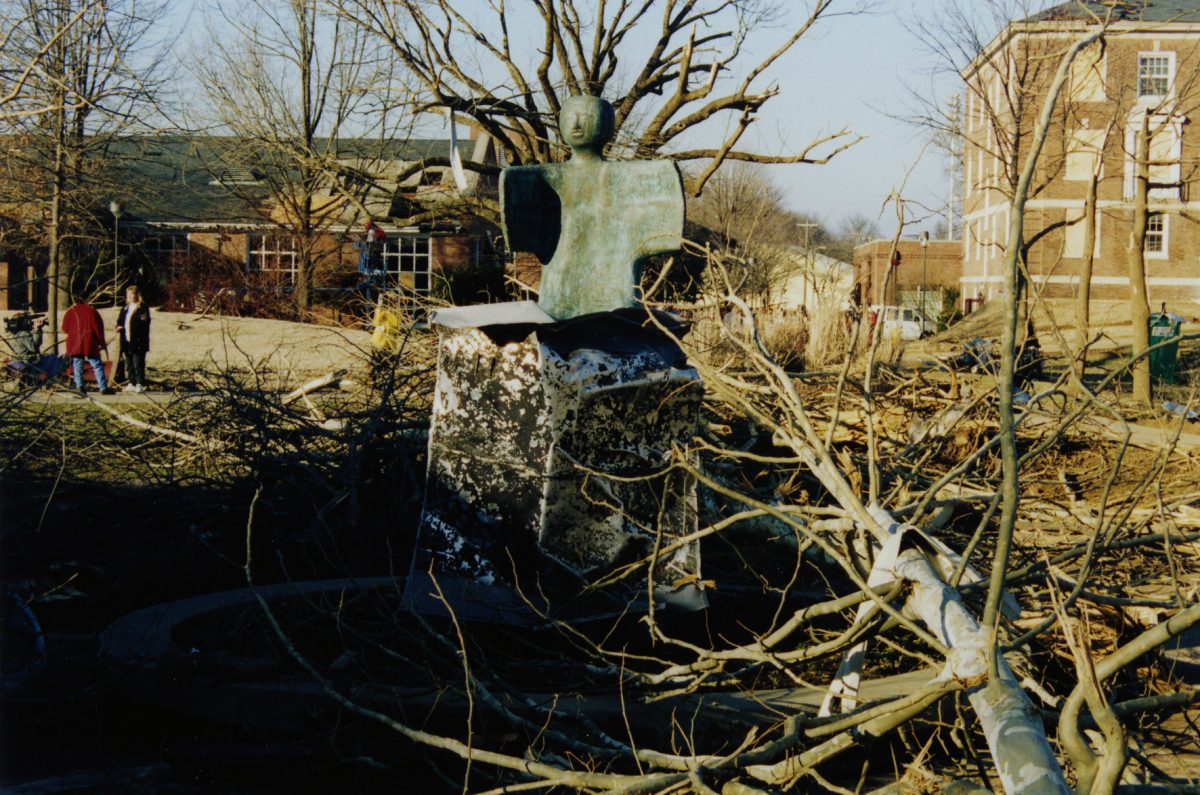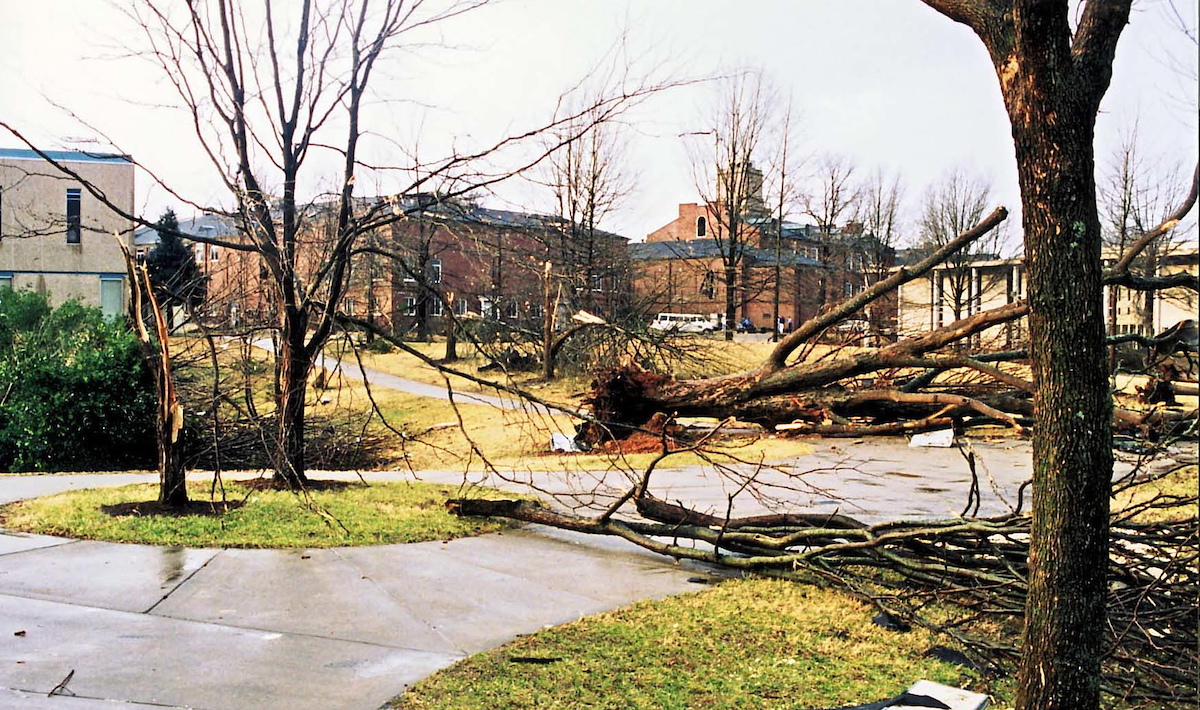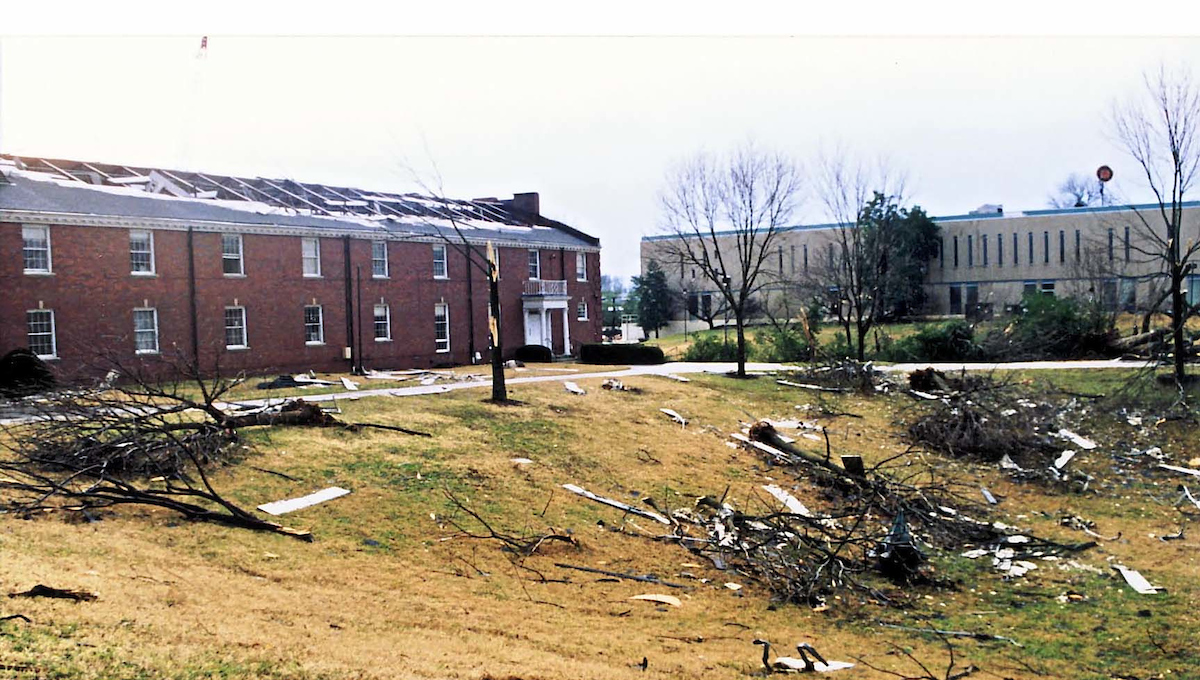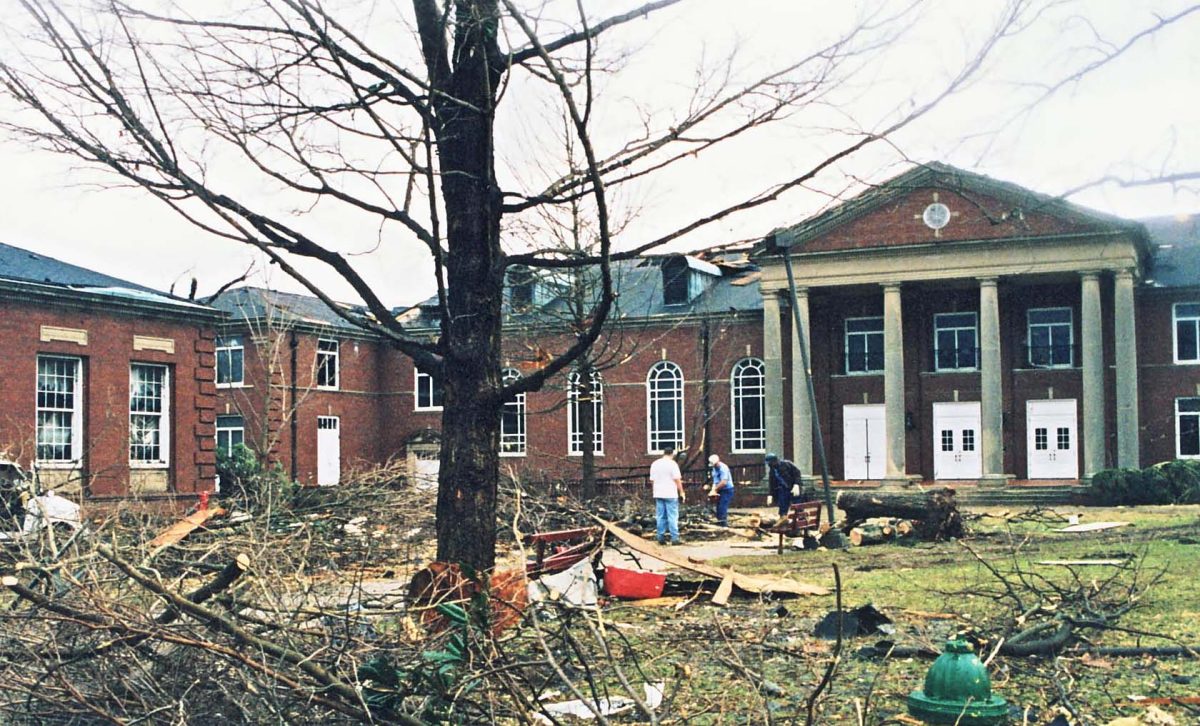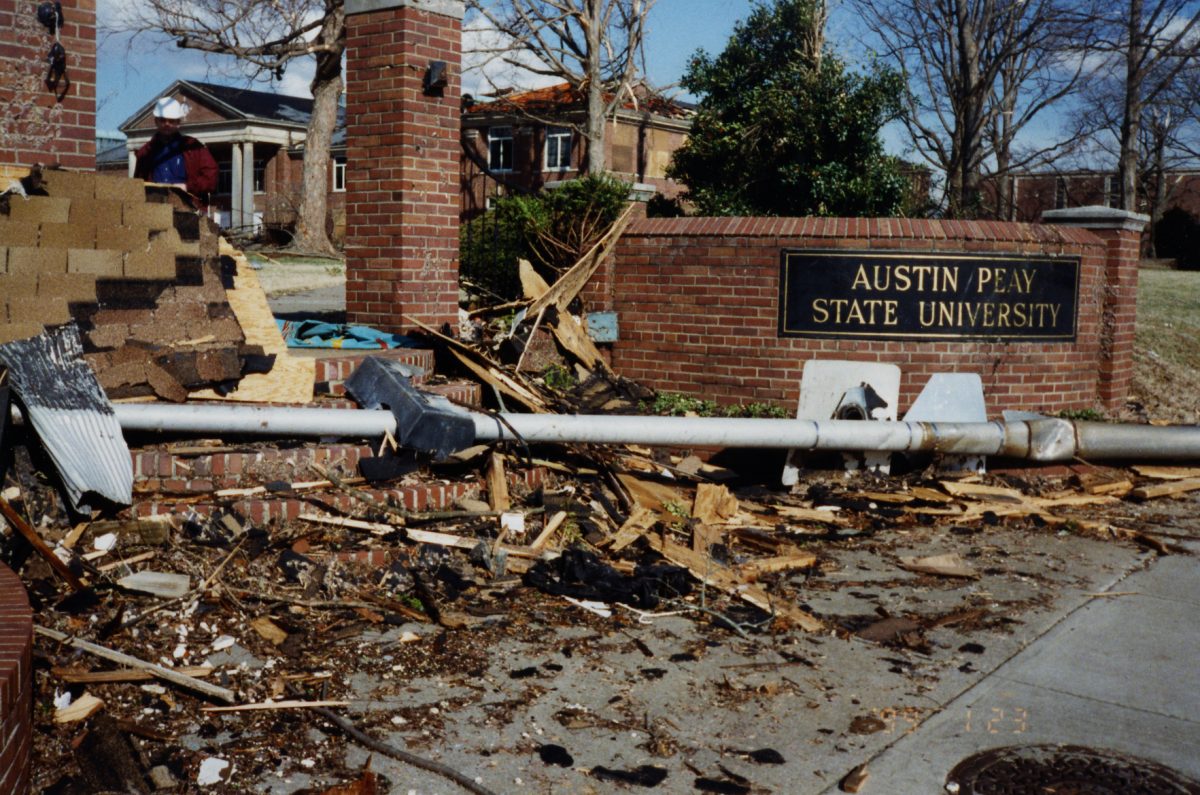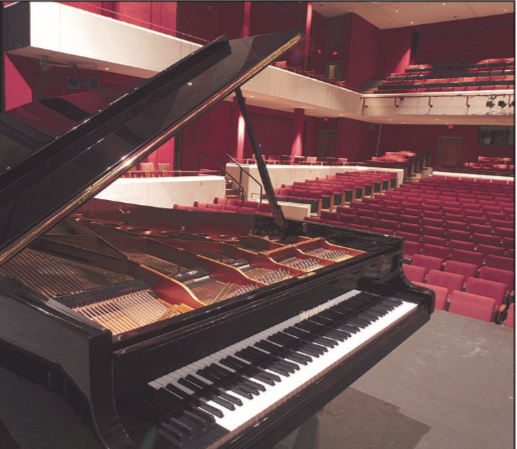Editor’s Note: This is a special republication of our 10-year anniversary edition of the 1999 tornado titled “Celebrating Restoration.”
A personal account by Charles B. Wall | Director of Technology 2009
I was one of the early responders the morning of the tornado. One of my staff members at the time, Darek Manley, lived in an apartment complex on Dunbar Cave Road. His mother who lives in Dickson had called him to say there was a tornado warning in effect for Clarksville.
He decided he would be safer on campus in the computer center than in the apartment. He made it to College Street in front of the McCord Building before the tornado hit. He was able to get out of his car, collect a lady who was in another car near him on College Street and make his way into the basement of the Browning Building.
I was in the basement of my home near Dunbar Cave when I received a telephone call from Darek telling me the tornado had struck campus.
After finding out that both he and the lady he had brought into the building with him were physically OK, although mentally shaken, I came to campus. (An interesting side note, when Darek and the lady went to find their cars, which they had left in the middle of College Street, Darek’s had been blown up on the sidewalk and a street sign was impaled through the driver’s seat into the steering wheel of the lady’s car. It is good Darek talked her into leaving her car and coming inside with him!)
As I drove down College Street toward campus, there were no streetlights.
Debris littered the street and there was no other traffic. I dodged limbs, wood, glass, metal as best I could and made it to the McCord parking lot where I parked. I went first to the computer room and talked to Darek. There was no electrical power on campus.
Mark Davis, our telecommunications manager at the time, arrived shortly. He and I decided to walk to the Shasteen building, where the campus Emergency Operation Center would be activated, and see if we could get a generator in place to power our emergency telephone switch that was located in Browning.

Stephanie Martin/Staff Photographer
The main switch located in the Browning building had battery backup but would not operate much beyond four hours if the commercial power was not restored.
On our way to Shasteen, we passed Physical Plant workers who had come in and campus police officers who were tending their duties. Once we made arrangements for powering the emergency telephone switch, I decided to come back to Browning.
I rode with one of the campus police officers to the McCord lot. As I got out of the police car, the sun was just coming up so I could actually see the devastation. I looked across College Street to the south. I had lived in Clarksville all of my life and knew what things should look like from that view but nothing looked right!
I didn’t recognize anything for a while until I realized that many of the buildings I would have seen the day before were damaged or destroyed. That was a strange sensation.
As I think back on the image, it seemed like a scene of mass destruction in a science-fiction movie.
As I walked back toward Browning, I met a project manager from TBR who was on campus for a meeting that morning to turn the Ziegler building over to a demolition contractor. Both Ziegler and the old University Center were to be demolished to make room for the current University Center. Since it was now daylight, he and I decided to walk around campus to see the extent of the damage.
As we walked around Browning, we could see the roof was gone on the Clement building as well as Harned Hall, and much of the roof on Harvill Hall was missing. Trees were mangled all over campus and there was debris everywhere.
The most disturbing memory I have is of the dead birds and squirrels lying on the streets and sidewalks. At that time, there was a line of pine trees between Claxton and Archwood. A large number of birds used those trees as a roost and were destroyed along with the trees when the tornado came through.
By daylight, police had stopped access to downtown, and it was difficult for our staff to get into work. The Information Technology staff who were able to get to campus spent the day removing computer equipment from the damaged buildings.
It was raining, but the temperature was warm for January and we were able to work in light jackets. Around mid-morning, I received a cell phone call from a friend in IT at TBR who wanted to know what he could do to help.
He knew we were scheduled to produce W2 tax forms that day. I told him the computer center was undamaged but had no electrical power and it didn’t look like we would get power for several days. He said he would take care of that. A short while later he called back and said a generator was on the way.
He was a member of the Tennessee National Guard and by dark, we had a generator in place along with a National Guard crew who kept it fueled and running. We produced the W2s the next morning and got an email as well as the website operational.
As TEMA arrived and formal meetings began to occur with all affected agencies, I think they were surprised to learn we already had a generator.
I talked several times during the day with my wife to find out how friends and family had faired. It was several days before I had an opportunity to get to our family farm to see if there was any damage there.
Fortunately, there was not. We ate what we could find in the way of snacks that the first day. I went to move my car around noon and discovered I had a flat tire. No surprise there!

Folks who were leaving campus were having trouble getting back due to the roadblocks. Someone who did get in brought me a can of Fix-A-Flat and I used that to temporarily repair my tire when I left campus. I went to Sears to have the tire repaired; it was the only place I found that was open and they were closing shortly after I got out there.
Days began to run together after the first day.
There were early morning team meetings each morning and wrap up meeting each night. The campus was open for classes in less than a week following the tornado. The morning the tornado struck, we were scheduled to turn the Ziegler building over to a demolition contractor. It had been gutted of all usable items.
The demolition contract was put on hold and we immediately began temporarily wiring Ziegler for phones and data to serve as temporary office and classroom space. Much equipment had also been removed from the old University Center in preparation for demolishing it as well.
The UC suffered only minor damage from the tornado. Several broken windows were boarded up and it too was put into service to house classes and computer labs displaced from other damaged buildings.
There were lots of volunteers to help clean up the campus including students, faculty, staff and community members. Some were discouraged because they wanted to help but they could not get into the area to do so.
Difficult tasks seemed to be protecting property from vandals and protecting those who wanted to help from possible harm due to unsafe conditions.



